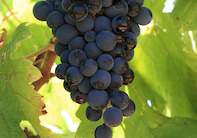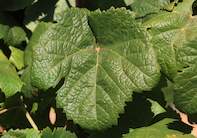Description
Tinta Barocca is a red wine grape variety used for the production of fortified Port-style or dry red wines. It developed out of a cross between Marufo and Touriga Naçional.Origins
Tinta Barocca has its origin in the Douro valley in northern Portugal, where the first seedlings were selected in 1899.Other Names
It also used to be known as Tinta Barroca, Baroccas, Boca de mina, Tinta das Barrocas, Tinta gorda, Tinta grossa and Tinta vigaria.Production in South Africa
Tinta Barocca was imported from Portugal in the late 1920s. Initially there were growers who confused it with Shiraz, but after realising their mistake started using the variety for the production of world class port-style wines. The wavering demand for Port-style wines, over the past few years, have resulted in South African growers also making premium quality blended and single varietal wines from the variety.
South Africa has a long history of Port production, but has not been allowed to use the Port label since January 2012 after signing an agricultural trade agreement with the European Union. Since then, South African “Port”-style wines have been bottled under the prefix Cape, followed by the appropriate style.
According to the Cape Port Producers Association, the label Cape White is used for fortified wines made from non-muscat varieties, such as Chardonnay, Chenin blanc or Verdehlo, while Cape Pink is reserved for a fortified rosé variety with a pink hue. Both these styles have to be matured for at least 6 months to qualify for these styles.
The Cape Ruby label is used for a blend of young, full-bodied and fruity fortified wines. It differs from Cape Tawny in the sense that at least half of the wine used to make it has to be matured for six months and no longer than three years. In contrast, at least 80% of the wine used to make Cape Tawny have to be aged for at least six years.
Cape dated or Vintage Tawny also has to be aged for at least six years, but it has to be made from grapes harvested in a specific year – in other words, a single vintage. The Cape Late Bottled Vintage label is used for wines that were matured in an oak barrel or bottle for at least three years, with a minimum maturation in oaken casks for at least two years.
In addition to this, 85% of the wine in the bottle has to come from a single vintage year. Cape Vintage is used for dark wines from a single vintage that has been matured for at least a year, while Cape Vintage Reserve is used what producers regard as their superior Cape Vintage wines.
Production Regions
The area under Tinta Barocca in South Africa has more than halved since the 1980s, due to wavering international demand for Port-style wines. While a couple to a few hectares may be found in most of the production regions, the biggest plantations are found in the Swartland, Little Karoo and Stellenbosch. These areas account for roughly three quarters of the total Tinta Barocca production in the country.Growth and Ripening
It is a vigorous grower with a crawling habit and high production potential, ranging between 16 t/ha to 20 t/ha. Grapes ripen mid-season, from the middle of March.
Berries and Leaves
The berries are medium-sized, short oval and black. The skin is thin and tough, while the flesh is somewhat firm but watery at times. The leaves are big, round whole to three-lobed and have a light green colour.

